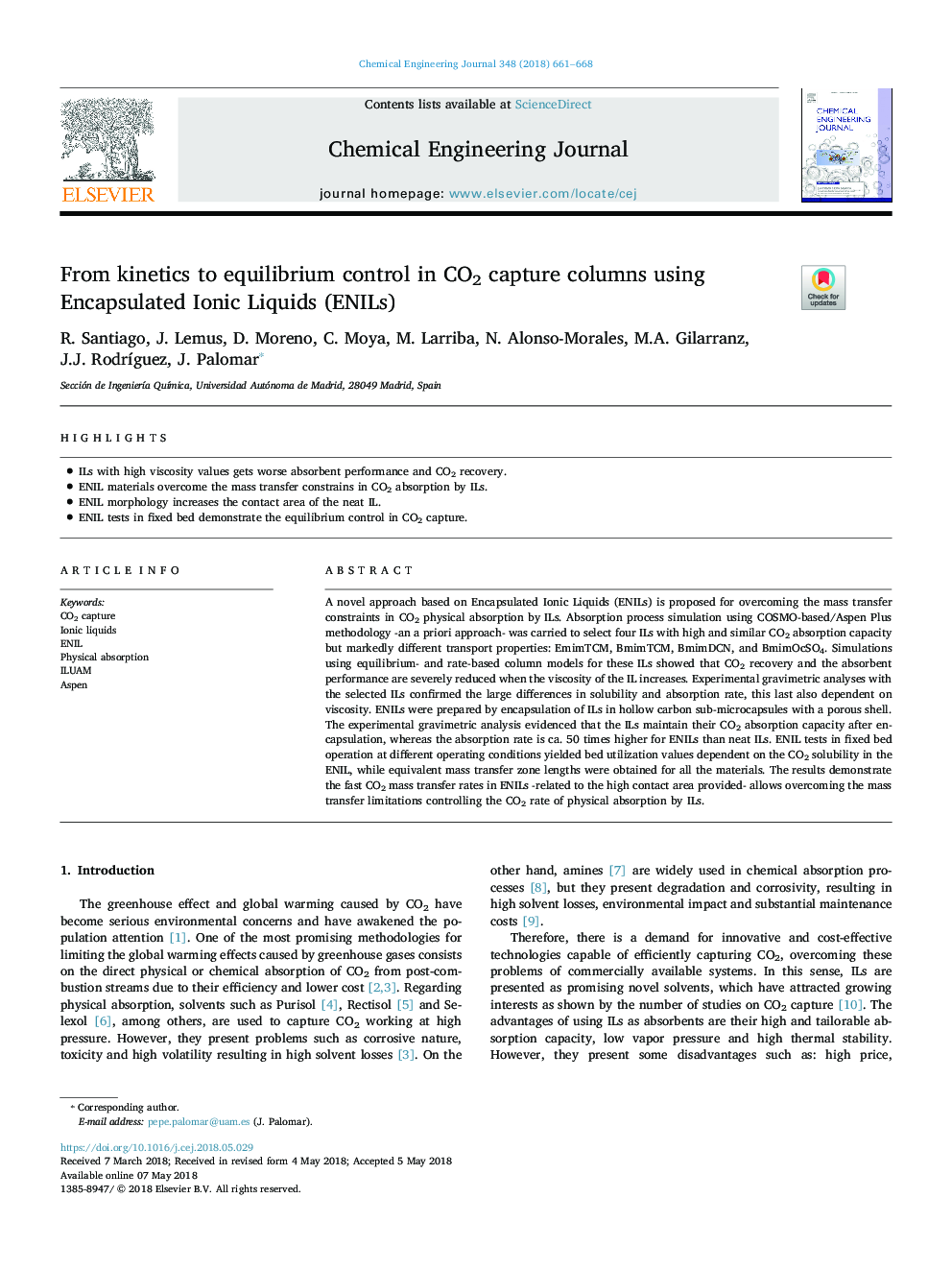| Article ID | Journal | Published Year | Pages | File Type |
|---|---|---|---|---|
| 6578933 | Chemical Engineering Journal | 2018 | 8 Pages |
Abstract
A novel approach based on Encapsulated Ionic Liquids (ENILs) is proposed for overcoming the mass transfer constraints in CO2 physical absorption by ILs. Absorption process simulation using COSMO-based/Aspen Plus methodology -an a priori approach- was carried to select four ILs with high and similar CO2 absorption capacity but markedly different transport properties: EmimTCM, BmimTCM, BmimDCN, and BmimOcSO4. Simulations using equilibrium- and rate-based column models for these ILs showed that CO2 recovery and the absorbent performance are severely reduced when the viscosity of the IL increases. Experimental gravimetric analyses with the selected ILs confirmed the large differences in solubility and absorption rate, this last also dependent on viscosity. ENILs were prepared by encapsulation of ILs in hollow carbon sub-microcapsules with a porous shell. The experimental gravimetric analysis evidenced that the ILs maintain their CO2 absorption capacity after encapsulation, whereas the absorption rate is ca. 50 times higher for ENILs than neat ILs. ENIL tests in fixed bed operation at different operating conditions yielded bed utilization values dependent on the CO2 solubility in the ENIL, while equivalent mass transfer zone lengths were obtained for all the materials. The results demonstrate the fast CO2 mass transfer rates in ENILs -related to the high contact area provided- allows overcoming the mass transfer limitations controlling the CO2 rate of physical absorption by ILs.
Related Topics
Physical Sciences and Engineering
Chemical Engineering
Chemical Engineering (General)
Authors
R. Santiago, J. Lemus, D. Moreno, C. Moya, M. Larriba, N. Alonso-Morales, M.A. Gilarranz, J.J. RodrÃguez, J. Palomar,
